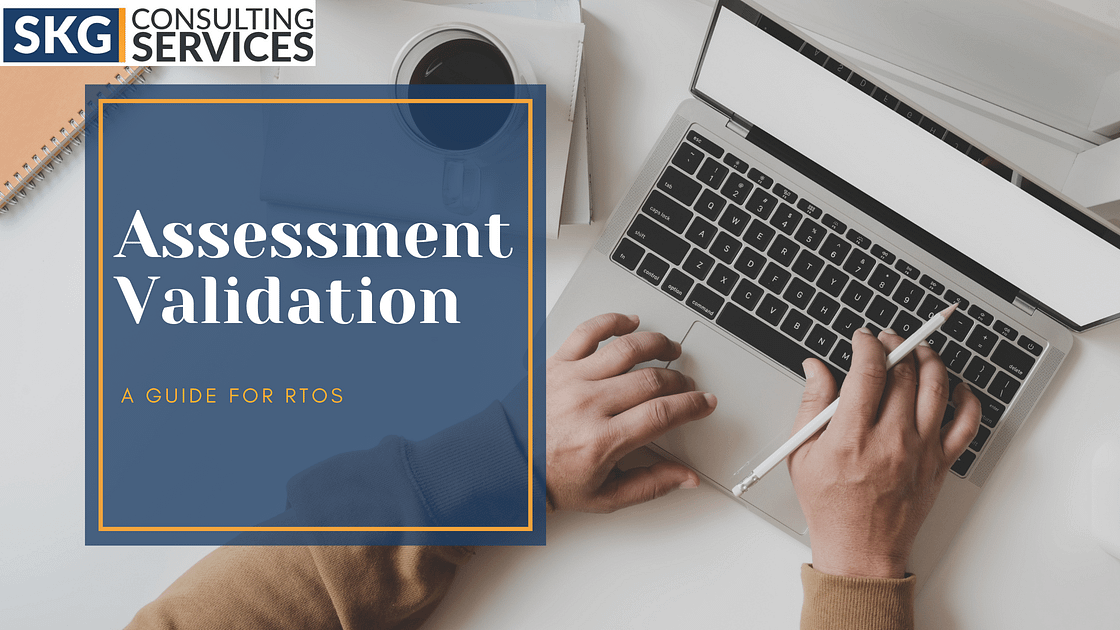Assessment Validation: A Guide for RTOs

Assessment Validation: A Guide for RTOs
Assessment Validation: A Critical Aspect of RTO Compliance
Running a Registered Training Organisation (RTO) comes with a range of responsibilities post-registration, including annual declarations, AVETMISS reporting, and ensuring marketing materials comply with regulations. Among these, assessment validation often stands out as a particularly intricate but crucial task.
What is Assessment Validation?
Assessment validation involves conducting a detailed review of the assessment process to verify its accuracy and identify areas for improvement. As defined by ASQA, it ensures that assessments align with training package requirements while adhering to the Principles of Assessment and the Rules of Evidence. With a strong grasp of its components, this process becomes more manageable.
Clause 1.8 of the Standards for RTOs 2015 requires RTOs to maintain compliant assessment systems, including Recognition of Prior Learning (RPL), that meet all relevant guidelines.
Types of Assessment Validation
The Standards for RTOs outline two key forms of validation:
- Assessment Tool Validation: Ensures that assessment tools meet the requirements of the training package.
- Post-Assessment Validation: Confirms that completed assessments comply with the Principles of Assessment and Rules of Evidence.
Validation is conducted at two critical points: before using assessment tools and after assessments are completed. This article focuses on the first—assessment tool validation.
Conducting Assessment Tool Validation
When Should Assessment Tool Validation Be Done?
Validation of assessment tools ensures they address all elements, performance criteria, and knowledge and performance evidence of the relevant units. This process is especially important:
- When adopting new learning resources.
- After adding new training products to your scope.
- During updates to existing training resources.
- Following student feedback or risk assessments highlighting gaps in resources.
Instead of waiting for your scheduled 5-year validation cycle, validate new tools promptly to ensure they are suitable for immediate use.
Which Training Products Should Be Validated?
All learning resources must undergo validation to confirm compliance before being deployed in training. This ensures they meet both regulatory and practical requirements.
Key Resources for Assessment Tool Validation
To carry out assessment tool validation effectively, you will need:
Learning Resources:
- Mapping Tool: Serves as a guide to determine if each assessment item aligns with the unit requirements.
- Student Workbook: Ensures clear instructions, adequate space for answers, and relevance to unit outcomes.
- Assessor Guide/Marking Guide: Provides clear benchmarks for assessing student competence and ensures consistency.
- Additional Tools: Includes checklists, templates, and other materials that complement the primary learning resources.
Validation Panel:
A validation panel can comprise one or more individuals. Collectively, they should possess:- Vocational competencies and industry-relevant skills.
- Knowledge of vocational training and assessment principles.
- Appropriate qualifications, such as TAE40122 or equivalent.
Validation Templates:
Validation templates streamline the process by documenting alignment between unit requirements and assessment tools. While these templates aid in compliance, more detailed versions are recommended to thoroughly review each unit requirement.
Principles of Assessment and Rules of Evidence
Validation ensures assessment tools meet the following standards:
Principles of Assessment:
Are assessments accessible to all learners?
Do they cater to diverse learning needs?
Do they measure the required skills and knowledge?
Will they yield consistent results across assessors?
Rules of Evidence:
Does the evidence align with unit outcomes?
Is there enough evidence to demonstrate competence?
Can the evidence be verified as the student’s own?
Are the tools relevant to current industry standards?
Tips for Effective Validation
- Understand Unit Requirements: Pay attention to the verbs in performance criteria to ensure assessment items accurately reflect tasks. For instance, a unit requiring learners to “perform” specific tasks cannot be assessed solely through written responses.
- Avoid Double-Barrelled Questions: Questions should be straightforward to prevent confusion for both students and assessors.
- Ensure Completeness: Every requirement in the unit must be addressed—partial completion indicates non-compliance.
- Provide Clear Benchmarks: Detailed benchmarks enable assessors to make accurate and consistent decisions.
A Proactive Approach to Compliance
Rather than relying solely on audit guarantees from resource developers, proactively validating your assessment tools ensures compliance and minimizes risks. This approach protects your RTO’s reputation and compliance history.
By following these guidelines, you can make assessment validation an integral part of your operations, ensuring high-quality outcomes for students and meeting all regulatory requirements.
